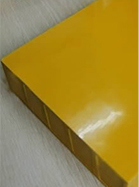loading...
- No. 9, Xingyuan South Street, Dongwaihuan Road, Zaoqiang County, Hengshui, Hebei, China
- admin@zjcomposites.com
- +86 15097380338
- Welcome to visit our website!
Affordable Pricing Options for Fiber Water Tanks and Their Features and Benefits
The Price of Fiber Water Tanks A Comprehensive Overview
In recent years, the emphasis on sustainable water storage solutions has led to an increased interest in fiber water tanks. These tanks offer a combination of durability, efficiency, and environmentally-friendly materials. As cities and rural areas grapple with water scarcity and effective water management, understanding the price and value of fiber water tanks becomes essential for consumers, businesses, and environmental advocates alike.
What Are Fiber Water Tanks?
Fiber water tanks are made from advanced composite materials that include fiberglass or other fiber-reinforced polymers. These tanks are designed to withstand harsh environmental conditions, including extreme temperatures and corrosion, which often compromise traditional water storage solutions like metal or concrete tanks.
One of the key advantages of fiber water tanks is their lightweight nature, making them easier to transport and install. The flexibility in design allows for various sizes and shapes, catering to a wide range of applications—from residential use to agricultural storage needs. Furthermore, fiber water tanks are less prone to algae growth and other biological contaminants, ensuring cleaner water storage.
Factors Influencing Price
The price of fiber water tanks can vary significantly based on several factors
1. Size and Capacity Larger tanks obviously cost more than smaller units. A tank with a capacity of 5,000 liters will be priced differently than one with a 10,000-liter capacity. Consumers should assess their storage needs carefully to determine the appropriate size.
2. Material Quality Not all fiber tanks are created equal. The type of fiber used, the thickness of the material, and the overall design can impact the durability and, consequently, the price. High-quality tanks may come with a higher initial investment but can save money in the long term due to their longevity.
fiber water tank price

3. Manufacturing Process The method used to produce fiber water tanks also affects the price. Tanks that are handcrafted or utilize advanced manufacturing technologies may be more expensive, but they often offer better quality and performance.
4. Brand Reputation Established brands with a proven track record in producing robust and reliable water storage solutions may charge a premium for their products. Conversely, newer or less well-known brands may offer lower prices but could compromise on quality.
5. Installation and Accessories The cost of installation and any additional accessories, such as pumps, filters, or custom fittings, can add to the overall price. It's crucial for consumers to factor these potential extra costs into their budget.
Average Prices in the Market
While prices can vary widely based on the factors mentioned above, fiber water tanks can generally range from $500 to $5,000 or more. Smaller tanks suitable for residential use can be found on the lower end of the spectrum, while large commercial-grade tanks designed for agricultural or industrial applications can be significantly more expensive.
Final Thoughts
Investing in a fiber water tank can be a strategic choice for anyone looking to secure reliable water storage solutions. Despite the initial costs, the long-term benefits—durability, low maintenance, and improved water quality—can justify the investment. As water scarcity becomes an increasingly pressing challenge, the demand for efficient and sustainable water storage solutions like fiber tanks is likely to grow, potentially stabilizing or even raising prices in the future.
In conclusion, understanding the pricing dynamics of fiber water tanks is crucial for consumers and businesses alike. By weighing the costs against the benefits and considering factors like size, quality, and brand, buyers can make informed decisions that not only meet their water storage needs but also align with sustainable practices in an era of growing environmental consciousness.
-
Premium FRP Handrail for All ApplicationsNewsAug.29,2025
-
Low Maintenance FRP Mini Mesh Grating ProductsNewsAug.29,2025
-
Innovative FRP Square Tubes for Modern Industrial SolutionsNewsAug.29,2025
-
FRP Water Storage Tanks Wholesale Solutions for Bulk BuyersNewsAug.29,2025
-
FRP Molded Grating Solutions for Diverse Industrial ApplicationsNewsAug.29,2025
-
Construction Advancements Through FRP Pultruded ProfilesNewsAug.29,2025
-
Why Choose FRP Railings, Guardrails, and Handrail Systems?NewsAug.29,2025
